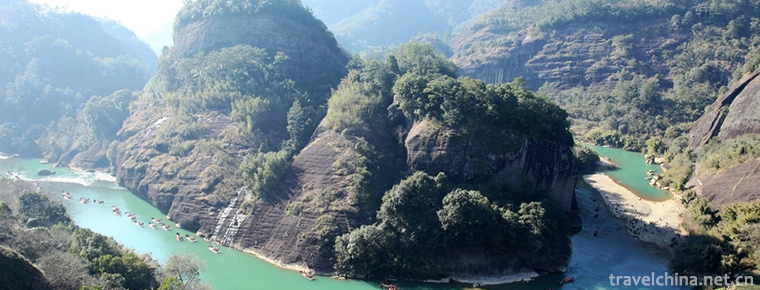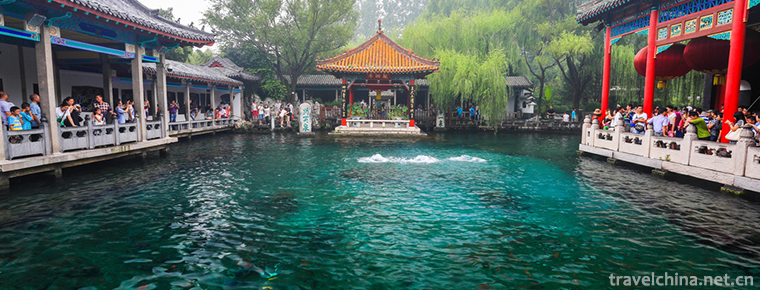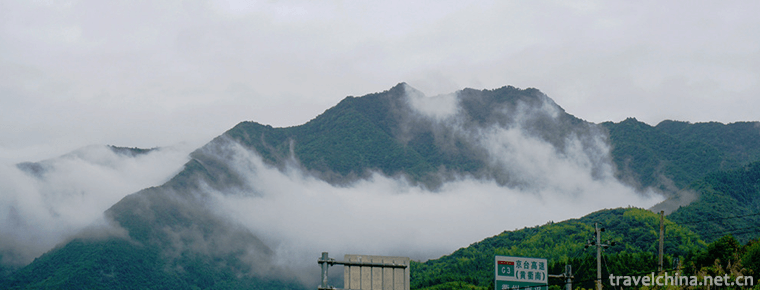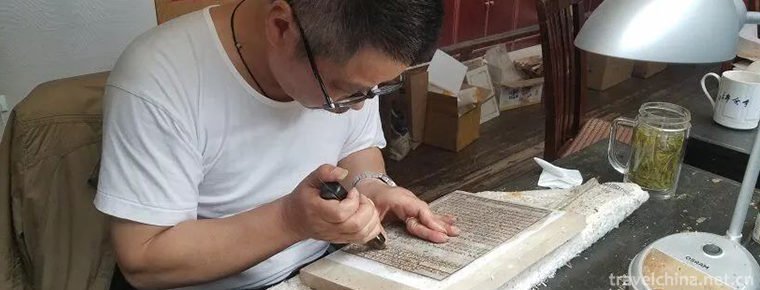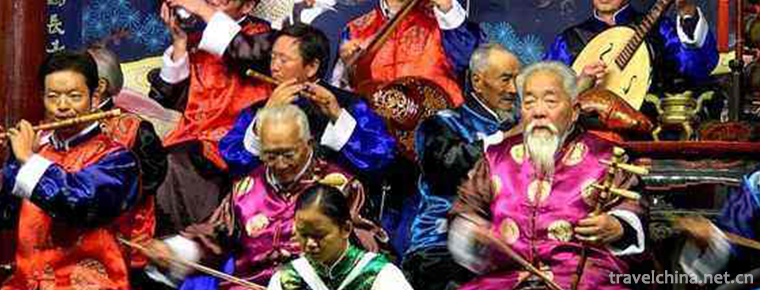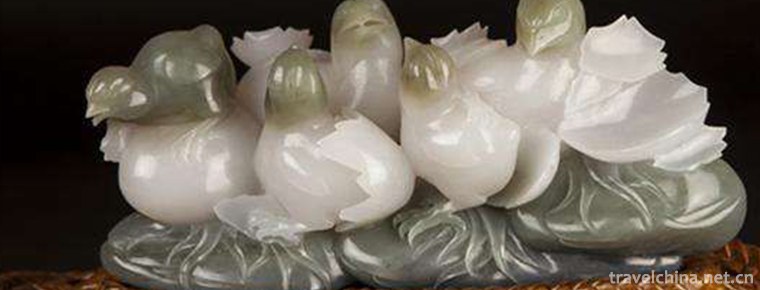Shaolin Temple
Shaolin Temple is the birthplace of Chinese Buddhist Zen ancestors and Kungfu. It is now a world cultural heritage, a national key cultural relics protection unit, and a national AAAAA tourist attraction. It is located under the Wuru Peak of Songshan Mountain in Dengfeng City, Zhengzhou City, Henan Province. It is named "Shaolin Temple" because it is located in the dense jungle of Shaoshan Mountain in the hinterland of Songshan Mountain. Founded in the nineteenth year of Taihe in the Northern Wei Dynasty (495), Emperor Xiaowen was built at the northern foot of Shaoshu Mountain in Songshan, opposite the capital city of Luoyang, in order to place the revered Indian monk Batuo. Shaolin Temple is often hospitalized with an area of about 57600 square meters. The current abbot is Shi Yongxin, the 47th and 33rd generation of Cao Dong orthodox.
Shaolin Temple is a world famous Buddhist temple and the ancestral court of Zen Buddhism in the Han Dynasty. It occupies an important position in the history of Chinese Buddhism and is known as "the first temple in the world". Shaolin martial arts monks of all dynasties are famous for their devoted research and continuous development of Shaolin Kungfu, which is known as "Shaolin is the best in the world, and Shaolin Kungfu is the best in the world".
In August 2010, the historic buildings in Tiandi, including Shaolin Temple, Chuzu Ancestral Temple and Tallinn, were listed as World Cultural Heritage by the United Nations Educational, Scientific and Cultural Organization (UNESCO).
Shaolin Temple was founded in the nineteenth year of Taihe in the Northern Wei Dynasty (495). Emperor Yuanhong of Xiaowen was built at the northern foot of Shaoshi Mountain in Songshan, opposite Luoyang, the capital city, to settle down and teach Hinayana Buddhism.
In the first year of Yongping (506), Indian eminent monks Lenamoti and Bodhisattva branch successively went to the Shaolin Temple to open translation sites, and set up a Bianjing Tang to translate scriptures in the Xitai Shrita of the Shaolin Temple. Later, Huiguang carried forward the Four-Divided Laws in Shaolin Temple and other teachers said that after many generations of development, later generations eventually formed the Four-Divided Laws Sect.
In the third year (527) of Xiaochang, Emperor Xiaoming of the Northern Wei Dynasty, Buddhist Bodhisattva of the 28th generation of Sakyamuni Buddha came to the Shaolin Temple. On the basis of the founding of Batuo, he gathered followers and taught Zen. In the three years of Tianping, Emperor Xiaojing of the Eastern Wei Dynasty, Buddhism was passed on to Huike. Since then, Zen Buddhism has been spread in Shaolin Temple.
During the peak period of Buddhism development in the Southern and Northern Dynasties, Emperor Wudi of the Northern Zhou Dynasty adopted the suggestion of returning vulgar Shamen to defend the Songceng Temple of the Yuan Dynasty and banned the spread of Buddhism in the three years of Jiande (574). Historically, Emperor Wudi of the Northern Zhou Dynasty destroyed Buddhism and the Shaolin Temple was seriously damaged.
In the two years (580 years) of the elephant in the Northern Zhou Dynasty, the emperor of the Northern Zhou Dynasty restored the Shaolin Temple and renamed it to the king's temple.
Emperor Wendi of the Sui Dynasty worshipped Buddha and rehabilitated the Min Temple as a Shaolin Temple. He gave the Shaolin Temple 100 hectares of land. With other rewards, the Shaolin Temple became a large temple with 100 hectares of good fields and huge temples.
In the early Tang Dynasty, the thirteen monks of Shaolin Temple were rewarded by Emperor Taizong of the Tang Dynasty for their contributions to the Tang Dynasty. They were given thousands of hectares of land and ground by water. They also called Shaolin monks monks and soldiers. Since then, Shaolin Temple has been well-known all over the world and is praised as the first Temple in the world.
During the Tang and Song Dynasties, Shaolin Temple owned more than 14,000 mu of land, 540 mu of temple base, more than 5,000 terraces and pavilions, and more than 2,000 monks. The Zen sect, founded by Damour, flourished in the Tang Dynasty and was the largest religious faction in the Tang Dynasty.
After the failure of the Qingli New Deal in 1043, the Emperor of Song Renzong began to set up a Zen Temple in Bianjing (now Kaifeng).
In the eighth year of Yuan You in Northern Song Dynasty (1093), Zen Master Baoen carried forward Cao Dong's sectarian style in Shaolin Temple and eventually made Shaolin Temple "change law into Zen"
At the beginning of the Yuan Dynasty, the ancestor lived Fuyu monk, abbot Shaolin, and led all the temples in the song Yue area. During his stay in Shaolin, Fuyu monks created bell towers and drum towers, and built additional galleries and Luku kitchens, where monks gathered to perform martial arts rituals and Buddhas.
During the Jiajing period, Japanese Japanese Japanese Japanese invaders invaded the coastal areas of China, and Shaolin monks had made great achievements in fighting against Japanese invaders. Therefore, the government renovated the temples on a large scale, and Shaolin Temple also enjoyed the privileges of exempting from food shortages granted by the government. Since then, Shaolin monks have been recruited by the Ming government at least six times, participated in warfare, and repeatedly built meritorious deeds. Therefore, the court has built many temples for Shaolin temple, and Shaolin Kungfu's authoritative status in Chinese martial arts has been established.
In the forty-third year of Kangxi (1704), Emperor Kangxi wrote the inscription of Shaolin Temple (formerly hanging in the Temple of Heavenly Kings, then moving to the mountain gate) and Baoshu Fanglian (formerly hanging in the Palace of Daxiong, then burned) on two sides.
In the thirteenth year of Yongzheng (1735), Emperor Yongzheng visited the temple plan personally, examined and approved the plan, rebuilt the mountain gate, rebuilt the thousand Buddhist temples, and the Shaolin Temple consumed 9,000 yuan in this major renovation and reconstruction.
In the fifteenth year of Qianlong (1750), Emperor Qianlong visited the Shaolin Temple and stayed in the abbot's room at night. He wrote many poems and tablets.
During the early years of the Republic of China, the civil war between the revolutionary party and the Beiyang government was repeatedly attacked by the war in Shaolin Temple.
In the first year of the Republic of China (1912), Yunsong Henglin, a monk of Dengfeng County, was elected as the head of the Shaolin Guard Corps by the local gentry. He purchased firearms, organized the Guard Corps, and trained his fighting skills to maintain local order.
In the autumn of the ninth year of the Republic of China (1920), Henglin led the people's group to fight against bandits ten times, and dozens of villages around the temple were able to live and work in peace and contentment, which was known as the living Buddha of Shaolin.
Since the founding of the People's Republic of China, especially since the new religious policy was promulgated by the government in the 1980s, along with the opening policy of the state and the arrival of the global multicultural era, Shaolin Temple has inherited and developed its unique fine traditions, successively restored the Zen Hall, and held the Seventh Advanced Zen Annually. Collecting and sorting out the good books of ancient books, Shaolin Temple Tibetan Classic Pavilion has been listed as the national key protection unit of ancient books, and has sorted out and published many books, such as The Complete Book of Chinese Buddhist Medicine, Chinese Musashi and so on.
After the Cultural Revolution, the Shaolin Temple was renovated and rebuilt. Among the existing buildings, including the famous Daxiong Palace and the Damo Face Wall Stone, are all ancient reconstruction buildings. However, some places, such as the ancient martial arts training ground, the Talin and some stone carvings, still belong to the remains of ancient relics.
In 1997, Henan Shaolin Temple Industrial Development Co., Ltd. was formally established.
Since 2001, Gongyi Ciyun Temple, Xingyang Donglin Temple, Dalian Yongqing Temple and Xinmi Chaohua Temple have successively become the Lower Court of Shaolin Temple. As of March 2016, there are 17 lower courts of Shaolin Temple (see the list of "Shaolin Lower Court". Among them, Kunming Shaolin Temple is the joint trusteeship of four temples in Guandu Ancient Town, commonly known as "Kunming". Shaolin Temple.
On March 22, 2006, then Russian President Vladimir Putin visited the Shaolin Temple to watch the Shaolin Kung Fu performance. He was the first foreign head of state to visit the Shaolin Temple in the history of Shaolin.
In 2009, Shaolin Temple established Fengying Bank Co., Ltd. to build the first Shaolin Temple and Overseas Shaolin Cultural Center headquarters outside the mainland of China (Shaolin Temple in Hong Kong for short).
On August 1, 2010, the 34th World Heritage Conference was considered and approved by UNESCO. The historical buildings (Shaolin Temple (often hospitalized, Chuzu Temple, Talin), Sanque (Taishuque, Shaoshuque Queen, Qimuque), Zhongyue Temple, Songyue Temple, Huishan Temple, Songyang Academy and Guanxing Tai) in Tiandi were listed as the world. Cultural heritage.
In 2011, Shaolin Temple led the major schools and established the first martial arts school in Taiwan, Miaoli, Taiwan.
On February 23, 2015, Shi Yongxin, abbot of Shaolin Temple, paid the mayor of Shor Haven, New South Wales, about A$4162,000 (about 20.405 million RMB) in a cheque to settle all the land purchases. The project is planning to build an Australian temple in Shaolin Temple.
At the foot of the small room mountain, about three hundred meters west of Shaolin Temple, there is a China's largest Tallinn. It faces Shaoxi in the south, Longhu Mountains in the back, Funiu Mountains in the east, Dangyang Slope in the west, lush forests, beautiful and elegant environment. This is the famous Shaolin Tallinn. It is the tomb of the monks and abbots of all dynasties in Shaolin. In Tallinn, there are 256 types of towers from Tang Dynasty to now, including 47 yuan towers, only the stock of the Ming tower. It is said that the existing towers are only 1/2 of the original ones, and the rest are destroyed by landscape over the years. The 47 Yuanpagodas here have left precious objects for the study of the architectural art of the Yuan Dynasty with their architectural style and masonry carvings. What's more, almost every pagoda has its own inscription, which provides valuable information for the study of the history of Shaolin Temple and the culture of Yuan Dynasty. Several important Yuanpagodas, such as Yugong Pagoda, Yueyan Presbyterian Pagoda and Huanyuan Presbyterian Pagoda, were built in the middle of the pagoda. In the east of central Tarim, there is a "Ju'an Elderly Spiritual Pagoda" built in 1339, which is a single-layer brick Pagoda with five overlapping eaves and beautiful shape. The back wall of the pagoda is inlaid with the inscription and narration of the Buddhist monk Zhaogong and Shang Pagoda. The inscription and the book Dan are from the hand of "Shaoyuan Shao yuan". According to the Zen master, Ju Dian, the court gave the "great Buddhist master". He was asked to be the abbot of Shaolin Temple for two years (1322) and died in second years. Sixteen years later, disciple Jane asked Shaoyuan, the first Japanese monk in Dangshan, to write Dan, which left this pagoda inscription. Because the inscription came from a Japanese monk, and the dictionary and calligraphy have a very high attainment, especially precious. Shaolin Temple Pagoda Forest is selected as the largest ancient pagoda complex in the world by the World Records Association, which is the largest ancient pagoda complex in the world.
One kilometer north of Tallinn is the first ancestor's temple. It is the oldest wooden structure in the relics of Henan Province. It was built to commemorate the wall of Damo. The eaves, columns, walls and stones around the temple are embossed. In the shrine of the main hall, there is a portrait of Damour.
Five on the top of the breast, the cave is about 7 meters deep, and 3 meters wide. On the stone wall inside the cave, there are grooves more than 1 meter high and 60 cm wide, which are the traces of the excavation of Damo face stone. There are four statues of Damour and his disciples. Outside the cave, there are stone fangs, built in 1604, double pillars, inscribed by Hu Bin in the south. Legend has it that Damo once lived on this wall for ten years. Because of his deep kungfu, his figure shape was printed on the rocks, leaving a very legendary "Damo shadow stone".
The second ancestral temple is located in the southwest of Shaolin Temple. According to legend, Hui Ke, the second generation of Zen Buddhism, had been wounded in Bodhi Damour's learning of Buddhism and his broken arm. There are four wells in front of the hall. The four wells are very close to each other, but they have different water tastes. They are called Zhuo Xijing. The local people also call them "bitter, hot, sour and sweet four wells".
Since the founding of the People's Republic of China, the cultural exchanges between Shaolin Temple and other parts of the world have been continuously enhanced in terms of specifications, scale, frequency and scope. From European and American dancers, world Thai boxing champions, NBA stars, Hollywood movie stars to visit earlier, from Myanmar, Thailand, Cambodia, Nepal and Sri Lanka and other traditional Buddhist countries to pay homage to the great monks; from King Carl XVI Gustav of Sweden, Queen Elizabeth II of Britain, Spain Wang Juan Carlos I, former Prime Minister Howard of Australia, former President Mandela of South Africa and many other politicians made an appointment to the Shaolin Temple. They also visited Russian President Putin, former US Secretary of State Kissinger, Taiwan politicians Song Chuyu, Lien Chan, Wu Boxiong and former President Rogge of the International Olympic Committee in person. All these have further demonstrated and demonstrated the extraordinary influence of Shaolin Temple.
In 2004, the California House of Representatives and Senate voted twice to establish March 21 as "Shaolin Monastery Day in Songshan, California" as a legislative festival of the California Parliament. Shaolin Temple not only establishes more than 40 overseas cultural institutions in dozens of countries in the world and radiates over 300 cities around the world. Shaolin monks teach Buddhism and practise martial arts and meditation in these Shaolin cultural centers. Shaolin Temple also holds Shaolin Cultural Festivals in Europe and North America successively, and conveys Chinese culture to the mainstream societies of various countries in the world in various ways. Spiritual connotation and Oriental values.
On March 20, 2016, in order to celebrate the "Songshan Shaolin Temple Day" in California, the Shaolin Kung Fu Chan College in Los Angeles held colorful celebrations with local believers, students and parents in Thomas Burton Park to celebrate the statutory Festival named "Shaolin Temple".
On August 27, 2018, at 7:00 a.m., the National Flag Rising Ceremony was held at Shaolin Temple in Songshan, where the bright five-star red flag was raised in the Square in front of the mountain gate.
Songyang Academy is one of the four major academies of historical buildings in heaven and earth, one of the national cultural relics of the Song Dynasty, and the dissemination and development center of Luo School of Neo-Confucianism. There are many well-known scholars in the past dynasties to lecture and study here, which has a prominent position in the history of Chinese education. The Hanfeng General Bai and the Tang Dynasty Stele of Songyang Academy, known as "rare treasures", attracted many tourists and became the symbol of Songshan's rich historical and cultural accumulation. The Song Yang academy occupies the hinterland of Songshan, surrounded by hills, streams and streams. In December 1982, when the contemporary poet Wen Shan visited this area, he made a seven character poem in the Song Yang Academy.
There are many inscriptions inside and outside Shaolin Temple. Among them, the inscriptions of Yuan Dynasty are not only considerable in number, but also have precious cultural value. It is a rare material document for the study of religion, politics, history, calligraphy art and Sino-foreign exchanges in the Yuan Dynasty. On the right side of the Shaolin Temple, the tablet of "Ci Yun Tang" is full of beautiful inscriptions. Among them, there are two large monuments which live in the South and stand tall. The one on the west is "Dayuan donates Dashikong Kaifuyi and Sansi to pursue and seal the monument of Yugong, Master of Zen, Master of Kaishan Guangzong, Shaolin Kaishan Sect of Jin State" (Note: Yugong, Master Fuyu). This monument opened the first page of the history of the great Shaolin monastery in the Yuan Dynasty. On the exquisite of calligraphy, we should count "Tai Yuan reconstructing the Shaolin monastery of Henan Songshan Shaolin Dharma Master". Built in 1347, the inscription was 3.23 meters high and 1.38 meters wide. It was written in 1339, the fifth year of the second year. It was written by Ouyang Xuan, a scholar at that time. And the inscription is written by the great calligrapher of the Yuan Dynasty. The Tablet Narration of Master Xiao Liang Damo in the Reconstruction of Shaolin Chan Temple in Songshan, Henan Province, not only has a high artistic value of calligraphy, but also has a certain literature value.
Monks and Taoists in temples should be honored as "teachers" or "magicians", while monks living in temples should be called "elders", "abbots" and "Zen masters". The monks in the Lama Temple call them "Lama", that is, the meaning of "guru". They should not be called "monk", "monk", "monk", or even other humiliating names.
The common etiquette for meeting monks is to fold your hands together, bow your head slightly, or put one hand on your chest, head slightly lower, avoid improper etiquette such as shaking hands, hugging, touching the monk's head.
When talking with monks and humane people, we should not mention the words of killing, marriage and eating meat, so as not to arouse monks'disgust.
When traveling to temples, you should not make loud noise, make comments, make ironic remarks or walk around or disturb temples. In particular, it is forbidden to carve gods in disorder. If you encounter Buddhist activities, you should stand silently or leave quietly.












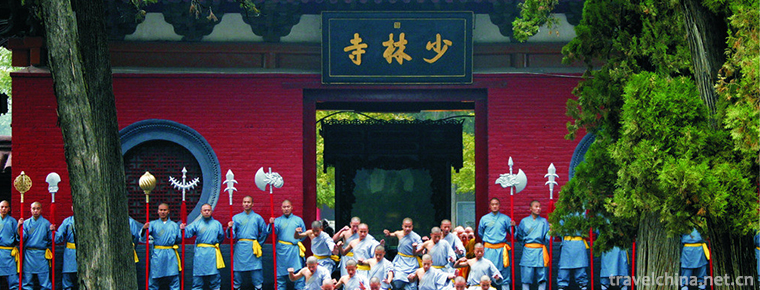
-
Mount Wuyi
Wuyi Mountain, Wuyi Mountain is located at the junction of Jiangxi and northwest Fujian Province. The southeastern foot of Wuyi Mountain has a total area of 999.75 square kilometers. It is a famous sc.
Views: 191 Time 2018-10-28 -
Ancient Huizhou Cultural Tourism Zone
Huangshan Ancient Huizhou Cultural Tourist Area is located in Huangshan City, Anhui Province, north of Huangshan Mountain, south of Qiandao Lake.
Views: 157 Time 2018-12-08 -
Jinan World First Spring Scenic Area
Jinan World No. 1 Spring Scenic Area, located in the center of Jinan City, Shandong Province, is a national AAAAA-level tourist attraction, national key park, advanced unit of national spiritual civil.
Views: 186 Time 2018-12-08 -
Jianglangshan 28du Tourist Area
28du Town, located in Jiangshan, Zhejiang Province, is a famous historical and cultural town. It is a writer's creation base in Zhejiang Province. It is located at the junction of Zhejiang,.
Views: 191 Time 2019-01-21 -
Xinjiang Tianshan
Tianshan Mountain in Xinjiang, the eastern part of the Tianshan Mountains, is also the main part of the Tianshan Mountains and the world natural heritage. Tianshan Mountain is one of the seven major m.
Views: 181 Time 2019-02-25 -
Engraving Printing Skills
Engraving printing technology, Yangzhou City, Jiangsu Province, local traditional handicraft, one of the national intangible cultural heritage..
Views: 393 Time 2019-04-27 -
Flower shuttlecock
Shuttlecock is a traditional folk sport with a long history, which is widely spread in China. Regular exercise can activate muscles and bones and promote health. According to historical documents .
Views: 294 Time 2019-05-04 -
Miao folk songs
According to its content, Miao folk songs can be divided into Youfang song (love song), wine song, bitter song, anti-song, funeral song, labor song, political song, children's song, riddle song and so.
Views: 88 Time 2019-06-05 -
Baisha Xile of Naxi Nationality
Naxi Baisha Xile is also known as "Xiaoli at breaking time", "Xiaoli at breaking time", "Xili at breaking time", "Xili at breaking time" and "Xie Li at bre.
Views: 242 Time 2019-06-06 -
Jade Carving in Yangzhou
Yangzhou has a long history of jade carving. Jade carving in Yangzhou reached a new peak in the Tang Dynasty, and carving and striping appeared in the Song Dynasty. During the Qianlong reign of the Qi.
Views: 95 Time 2019-07-10 -
And then I met him 66 Hu Tik Tok Songs 2020 Hot Songs
Hey, do you still think of me Like I cry sometimes at night I was so happy that I thought you were the end To give you everything Time is always disobedient and starts to play dumb.
Views: 487 Time 2020-05-21 -
Notice for visiting Chengdu Giant Panda Base
Please don't make any noise. Don't make any abnormal or sharp sounds, which will disturb the wild animals. Giant pandas and other animals naturally like quiet environment and are sensitive to noise. In order to ensure the effect of your visit, please respect their living habits and keep a quiet environment..
Views: 73 Time 2020-12-13
